The Planetarium Science Center (PSC) invites its visitors to spend a day of fun learning, where they can enjoy amazing full dome, as well as IMAX, shows at the
Planetarium Theater. Visitors can also enjoy tours of the
History of Science Museum, which revives the highlights of scientific discovery throughout three eras: Egypt of the Pharaohs, Hellenistic Alexandria, and the Arab-Muslim Supremacy.
On the other hand, visitors, especially the young, can enjoy a collection of interactive exhibits at the
ALEXploratorium. The exhibits are designed to stimulate the curiosity of both children and adults to discover the miracles of science.
Click here to check
Hours & Admissions.
Moreover, the PSC offers a large variety of activities, programs and events that tackle science from different angles. Most prominently, the Center conducts
Workshops that suit different age groups between the ages of 6 and 16 on regular basis. Other popular programs include the
Super Science Show,
Fun with Science and the
Chess Club.
During the school year, the PSC School Year Program offers school students a selection of fun scientific activities, divided over the school academic calendar. The Center also offers a special Mid-Year Program during the mid-year vacation.
Individuals and school groups have to register in advance to participate.
Every summer vacation, the PSC designs the
Summer Program; a bouquet of interactive activities that include, among others, hands-on workshops, lectures, shows, fieldtrips and camps. The Program aims to increase the students’ love of science in an interactive and attractive manner, and is divided into stages by age group.
Due to the limited places, individuals have to register in advance.
In addition to all that, the PSC organizes large-scale annual events to celebrate science with the public at large. PSC annual events include the
Science Festivity, a 3-day event that takes place every April; the
Arab Environment Day, which takes place in October; and Eratosthenes celebration every 21st of June; as well as the
Intel Bibliotheca Alexandrina Science and Engineering Fair (Intel-BASEF), the finale of which takes place in March or every year and the winners of which get to participate in the International Intel Science and Engineering Fair (ISEF) in the United States of America.
The Planetarium operates five days of the week: Saturday, Sunday, Monday, Wednesday and Thursday. It offers four shows a day, in addition to a slot for Groups to reserve the show of their choice.
Please see the Reservation Regulations.
• Stars Show – 45 min.
.jpg)
If you want to learn a bit about our amazing cosmos, come visit the Planetarium and have a closer look at the sky, with an accomplished astronomer to guide you through a one-night journey of the universe in just 45 minutes.
• The Zula Patrol – 23 min.
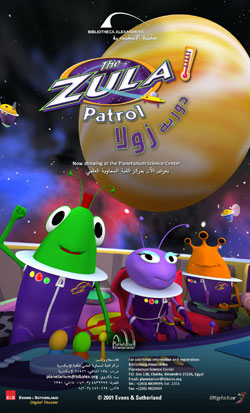
The Zula Patrol is designed to entertain while promoting an understanding of science and astronomy by engaging character-driven stories, which focus on specific educational science learning objectives.
For a full list of Available Planetarium Shows, click here
History of Science Museum
The Museum aims to link our present visitors, most of whom are youngsters, to their glorious past through three eras, each distinguished by a color: yellow for Egypt of the Pharaohs, blue for Hellenistic Alexandria, and red for the Arab-Muslim Golden Age.
The Museum comprises replicas of original masterpieces of major scientific contributions; its main objective is to emphasize scientists across the different eras, whose work and discoveries had enriched scientific knowledge.
• Ancient Egyptian Sundial:
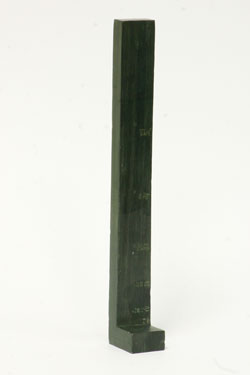
An astronomical device used in Ancient Egypt; it is an “L” shaped wooden bar with hieroglyphic numbers used to measure time during the day.
• Catapult:
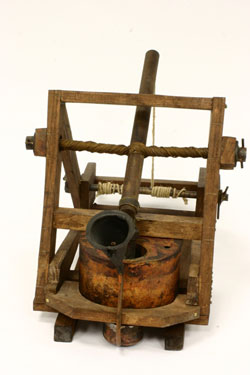
A military machine used in Hellenistic Alexandria; it is a small model of catapult which throws fire and metal balls at the enemy.
The BA is planning to renovate the Museum by adding interactive exhibits to display new scientific achievements in subsequent historical epochs. The renovation will be a breakthrough in museum techniques that are interactive rather than static.
For a Virtual Tour of the History of Science Museum, click here
The new ALEXploratorium is an attractive place to the public at large, with special emphasis on school children. It is designed to reinforce the discovery concept through three zones:
• Discovery Zone
Divided into three thematic areas where visitors can freely explore the hands-on activities. The zone comprises around 60 interactive exhibits with complementary explanatory charts.
• Discover Yourself
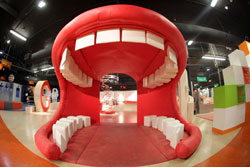
Revolving around the Human Body, with special emphasis on the Five Senses, the are also features a part about Genetics with an iconic DNA exhibit.
• Discover Your Environment
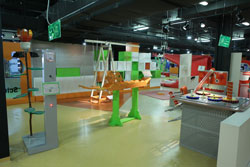
In this area, visitors experience sections such as Motion, Energy, Waves, the Elements and Life.
• Discover Your Universe
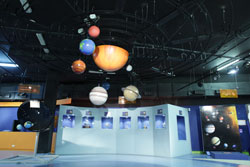
In this area, visitors discover the secerts of Outer Space and the Solar System.
For a peek of some Discovery Zone exhibits, click here
• The Workshops area
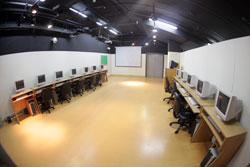
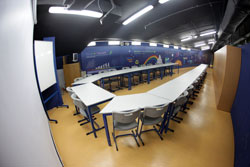
The area includes four highly-equipped halls designed to host the various hands-on workshops tackling various scientific fields.
For the list of Workshops, click here
• Listen and Discover auditorium
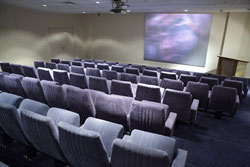
A cutting edge hall where scientific documentaries are displayed, it is also used as a lecture hall for our visitors.
For the Listen & Discover schedule, click here
After visiting the Planetarium Science Center, do not go away! There is more to see and experience here at the Library of Alexandria.
Please see the Reservation Regulations.
• The Main Library & Specialized Libraries
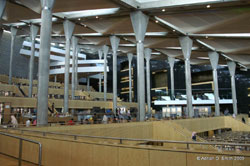
The BA Library is a learning space that offers information in all its formats, through its collections of books, periodicals, maps, manuscripts, multimedia, and electronic resources, and most importantly, customized services. The library is composed of the Main Library and a number of specialized libraries: the Children’s Library, the Young People’s Library, Taha Hussein Library, Arts & Multimedia Library, and Map Library which serve the specific needs of their users.
• Antiquities Museum
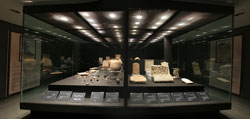
The BA Antiquities Museum is one of the few museums in the world that displays artifacts discovered at the same location of the museum. The museum houses unique collections which include 1133 pieces such as, marvelous mosaics from the antiquities of the BA site, and a black basalt statue of a Ptolemaic Queen from the submerged antiquities.
• Manuscript Museum
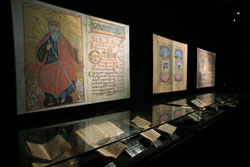
Visitors can leaf through digitized versions of a collection of rare manuscripts applying state-of-the-art digital techniques on touch-screen computers. This program enables the user to review any given manuscript, browse its different pages, magnify the desired part, and listen to related commentary and explanation. The museum houses three sections: Rare Collections section, Microfilm Section, and Museographic Display Section, which include two original pieces of the Kiswa of the Holy Kaaba, and exclusive collections of national and Arabic newspapers.
• El-Sadat Museum
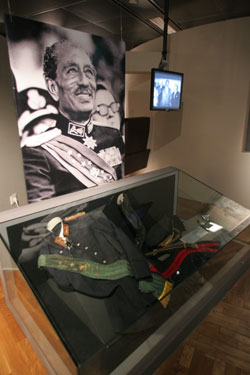
This permanent exhibition features a number of honors and decorations awarded to Anwar El-Sadat in Egypt and by other countries during various stages of his life, in addition to a number of gold, silver, bronze, and copper plates that he and Mrs. Gihan El-Sadat received as gifts.
• CULTURAMA
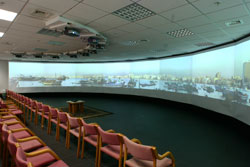
This is a remarkably informative multi-media presentation of Egypt’s heritage across 5000 years of history up to modern times, with highlights and examples of Ancient Egyptian, Coptic and Muslim heritage.
If you still have time, grab the chance to visit the historical touristic places around. A sightseeing trip in Alexandria, the second largest city in Egypt and known as The Pearl of the Mediterranean, involves exploring the rare archeological sights of the ancient times. Discover the fascinating world preserved in the museums of the city. Alexandria will remind you of its historical richness every moment.
• Qaitbay Citadel
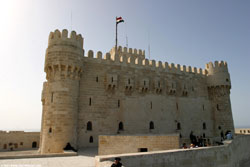
The Citadel is a 15th century defensive fortress on the Mediterranean Sea coast built upon the ruins of the Lighthouse of Alexandria, one of the Seven Wonders of the ancient world. Established in 1477 by Sultan Al-Ashraf Sayf al-Din Qaitbay, the Citadel is situated at the entrance of the eastern harbor on the pharos island. The view over Alexandria from the fort is impressive.
• Anfushi Tombs
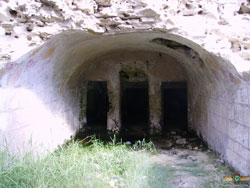
Anfushi Tombs in Alexandria are limestone tombs that can be traced to 250 BCE; they were unraveled for the world in 1901 and 1921. There, you can explore the remnants of the historic city; the motifs of Anfushi Tombs in Alexandria display a blended effect of Greek art and the traditional Egyptian art forms.
• The Roman Amphitheatre
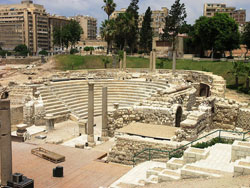
The Roman theatre is located in the area of Kom El-Dikka, almost in the center of the city. Dating back to the 2nd century CE, the theatre is grand and impressive, shaped in half circle, open to the sky with no curtains.
• Pompey’s Pillar
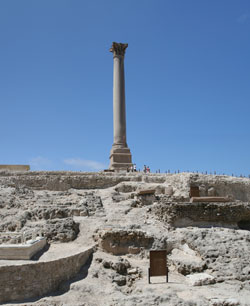
The Pompey Pillar is a huge memorial column made of red granite about 27m high including base and capital. The column was built in 297 commemorating the victory of the Roman Emperor Diocletian over an Alexandrian revolt.
• The Catacombs of Kom el Shokafa
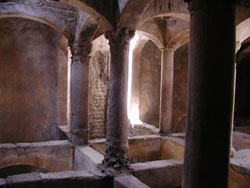
The catacombs, which date back to the 2nd century, lie in the district of Karmouz, east of Alexandria. They are so called because the design was very similar to the Christian Catacombs in Rome. They consist of a series of Alexandrian tombs, statues and archaeological objects of the Pharaonic funeral cult with Hellenistic and early Imperial Roman influences.
• Mosque of Al-Mursi Abu al Abbas
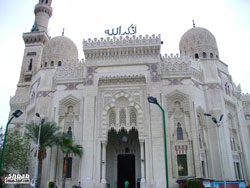
This beautiful mosque, with its high minaret and four domes, is Alexandria’s most important Islamic monument. It is dedicated to the 13th century Alexandrian Sufi scholar Al-Mursi Abu al Abbas whose tomb is within the mosque.
• Alexandria National Museum
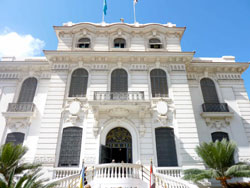
This Museum is one of the finest specimens of art in Alexandria; it is located in one of the restored palaces, Al-Saad Bassili Pasha Palace, and is situated in Fouad Street. Alexandria National Museum currently has 1800 artifacts; the valuable objects narrate the rich history of Alexandria disclosing chapters related to the Pharaonic, Roman, Coptic and the Islamic eras.